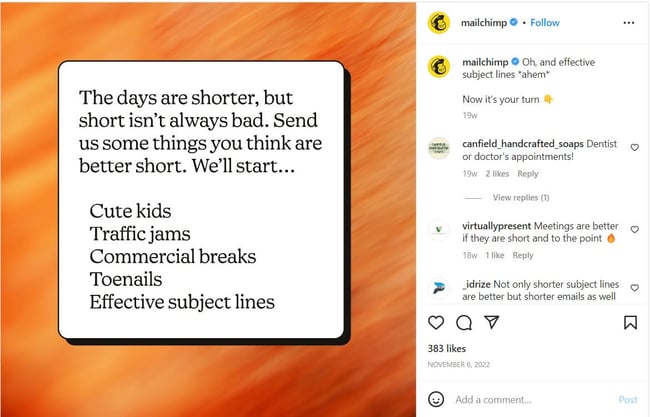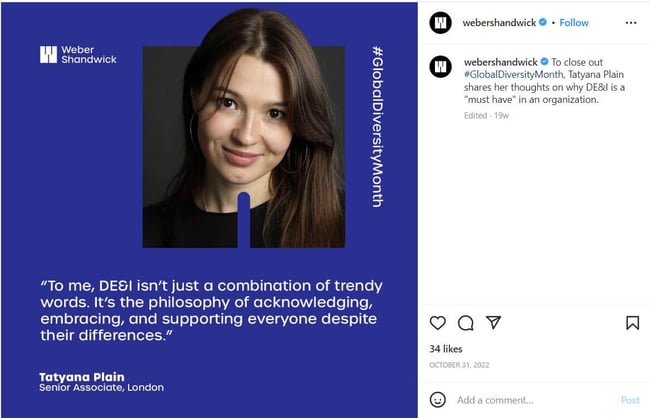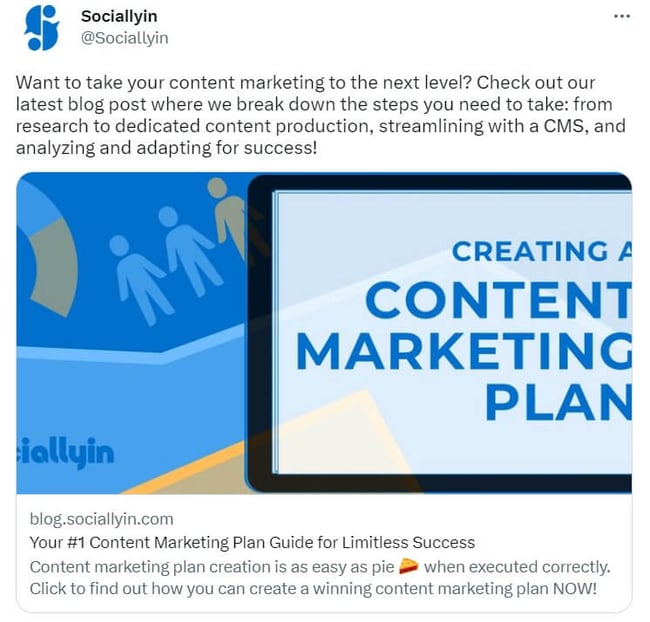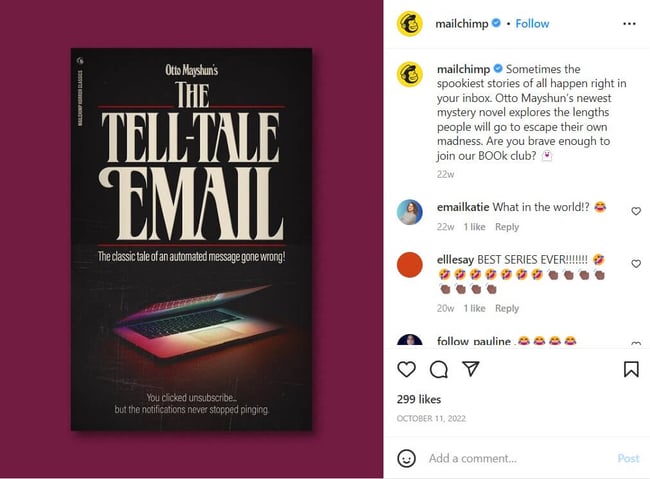Sendible insights How to Create a Social Media Style Guide for Your Marketing Agency
If you're looking to elevate your marketing agency's social media presence, creating a social media style guide is a great place to start. A social media style guide outlines your brand's tone, voice, and visual identity across all social media platforms.
It helps ensure consistency and cohesiveness, making your content recognisable and appealing to your audience. In addition, having a clear and defined social media style guide can save time and streamline your content creation process, strengthening your brand image.
In this article, we'll walk you through the steps to create a comprehensive and effective social media guide for your marketing agency. Whether you're new to the concept or just looking to improve your current strategy, this guide will give you the tools you need to create a social media style guide that sets you apart and drives results.
- Define Your Brand Voice and Tone
- Establish Guidelines for Visuals
- Create a Content Strategy
- Monitor and Review
1. Define Your Brand Voice and Tone
Defining your brand voice and tone is the first step in creating a social media style guide for your marketing agency. Your brand voice is the personality and character of your brand, while your tone is the emotional and linguistic expression of that personality.
Together, they form the foundation of your brand's communication style and create a consistent and recognisable brand identity across various social media channels.
Before you begin, take a moment to consider your brand's values, mission, and target audience:
- What sets your brand apart from others in your industry?
- What tone and voice would appeal to your target audience?
- What message do you want to convey through your social media presence?
To help you define your brand’s social media voice and tone, try asking yourself the following questions:
- How would you want your brand to be perceived by your audience?
- How do you want your brand to come across on your social posts?
- What adjectives would you use to describe your brand's personality?
For instance, you can tell from the image below that Mailchimp’s voice is conversational, informal, and wry.
 Source: @mailchimp
Source: @mailchimp
Once you have a clear idea of your brand voice and tone, you need to communicate these elements to your social media team through your style guidelines. Consider the following for each social media account:
- How will your social team language and tone in your posts?
- How will your social team handle customer interactions and responses?
- How will your social team communicate in case of a crisis?
The answers to these questions will help achieve a consistent brand voice and tone. This will enable you to create a cohesive social media presence that connects with your audience and ensures brand recognition.
2. Establish Guidelines for Visuals
Visuals are a powerful tool for capturing attention and conveying your brand's message, so it's essential to ensure they are consistent and in line with your brand's overall aesthetic. Here are some key elements to consider when developing your visual guidelines:
Image style
Decide on the type of images you want to use to represent your brand. Will you use stock photos, original photography, illustrations, or a combination of these? Ensure the images you use in your social media posts are high-quality and in line with your brand's tone and voice. You can use the multiple graphic design tools and software available today to ensure you create stunning visuals.
Logo usage
Define how and where you will use your brand logo. For example, will it appear in the corner of all images, in the header of your social media profiles, or both, like in this social media post by Weber Shandwick?
 Source: @webershandwick
Source: @webershandwick
Which ever placement style you go for, ensure your logo is consistent with your overall visual style.
Colour palette
Select a brand colour scheme and use it consistently across all social platforms. This will help to create a recognisable and cohesive visual identity.

Source: @Sociallyn
For instance, notice how consistently Sociallyin uses its blue and white branding colours throughout its social channels, from its logos to its profile feed.
Typography
The fonts you use in your profile feeds also help define your visual identity by making your brand easily recognisable to your customer base. So choose a font or a few fonts that you will use consistently across all social media platforms.
Image sizes
Specify the recommended image sizes for each social media platform. This will help ensure that your images look their best and are optimised for each social platform's size requirements.
By establishing clear visual guidelines, you'll ensure that your brand's visual identity is consistent and easily recognisable across all social media platforms.
The style should remain consistent with your physical products if you have any. So, for example, your social media branding style should match the creative packaging design of your products and other company assets. This will help strengthen brand recognition and your overall marketing efforts.
3. Create a Content Strategy
Even when considering other options to grow your online audience, like social media ads, the content remains king. Therefore, you must pay attention to your content strategy when creating a social media style guide.
Your strategy will outline the content guidelines on the types of content you will post, how often you will post, and what your content will focus on. A strong content strategy will also ensure that your social media content is consistent and aligned with your brand's overall goals.
To create your social content strategy, follow these steps:
- Define your goals: What do you want to achieve with your social presence? Are you looking to build brand recognition, drive traffic to your website, or generate leads? By defining your goals, you'll be able to create a content strategy that aligns with them.
- Know your audience: Who are you trying to reach with your social media presence, and what content would they find valuable? By understanding your customer personas, you'll be able to create content that resonates with them. For instance, if your target audience is SaaS brands, you may want to create content around topics like best web hosting platforms and digital marketing strategies.
- Set a posting schedule: How often will you post on social media? Will you post daily, weekly, or monthly? Setting a posting schedule ensures that you are consistently creating and sharing content with your audience.
- Determine your content mix: What content types will you post on social media? Will you focus on blog posts, infographics, videos, or a combination of these? By determining your content mix, you'll be able to create a strategy that is well-rounded and appealing to your target audience.
- Measure your success: How will you measure the success of your content strategy? Will you track engagement rates, website traffic, or lead generation? By measuring your success, you'll be able to make data-driven decisions and adjust your strategy as needed.
Here’s an outline of the best content formats for the key social media channels you should consider when creating your content strategy.
|
|
|
TikTok
|
|
YouTube
|
By following these steps, you'll be able to create a content strategy that is aligned with your brand's goals and resonates with your target audience.
4. Monitor and Review
Monitoring and reviewing your social media presence is also key in creating and maintaining a successful style guide for your marketing agency.
To monitor and review your social media presence, start by setting up metrics that’ll help you track your social media progress and make data-driven decisions. These social media metrics include impressions, engagement, virality, and audience growth rates.
Ensure you regularly review your content. Take a step back and review your content on a regular basis:
- Are you staying true to your brand's tone and voice?
- Are your visuals consistent with your visual guidelines?
By regularly reviewing your social content, you'll be able to make any necessary adjustments to ensure that your content is aligned with your goals.
Also, monitor any feedback from your audience, either as comments or direct messages:
- Are they responding positively to your content?
- Do they have any suggestions or requests?
By monitoring feedback, you'll be able to make changes that will help to improve your social media presence.
For instance, you can tell from the comments below that the audience is responding positively to Mailchimp’s content, which means the brand’s publishing the right content.
 Source: @mailchimp
Source: @mailchimp
Besides that, stay up-to-date with any new developments or social media trends:
- Are there any new platforms or features that would be a good fit for your brand?
Doing this will help you make informed decisions about your social media strategy. Then finally, based on the metrics you track, feedback from your audience, and trends in the social media world, make any necessary adjustments to your social media strategy.
By regularly monitoring and reviewing your social media presence, you'll be able to ensure that your brand's tone, voice, and visuals are consistent and aligned with your goals. This will help to build brand recognition and strengthen your overall marketing efforts.
In closing
Creating a social media style guide helps ensure your social media presence is consistent, aligned with your goals, and effectively reaches your target audience.
So follow the steps outlined in this article to create a strong social media style guide. Start by defining your brand voice and tone, establish design guidelines for visuals, create a content strategy, and monitor and review your social media presence.
Remember your social media style guide is a living document, so don't be afraid to make necessary changes. The goal is to create a strong, flexible and adaptable guide while still reflecting the core elements of your brand.
With a strong social media style guide in place, you'll be well on your way to building a successful social media presence for your marketing agency.
Text copied!



